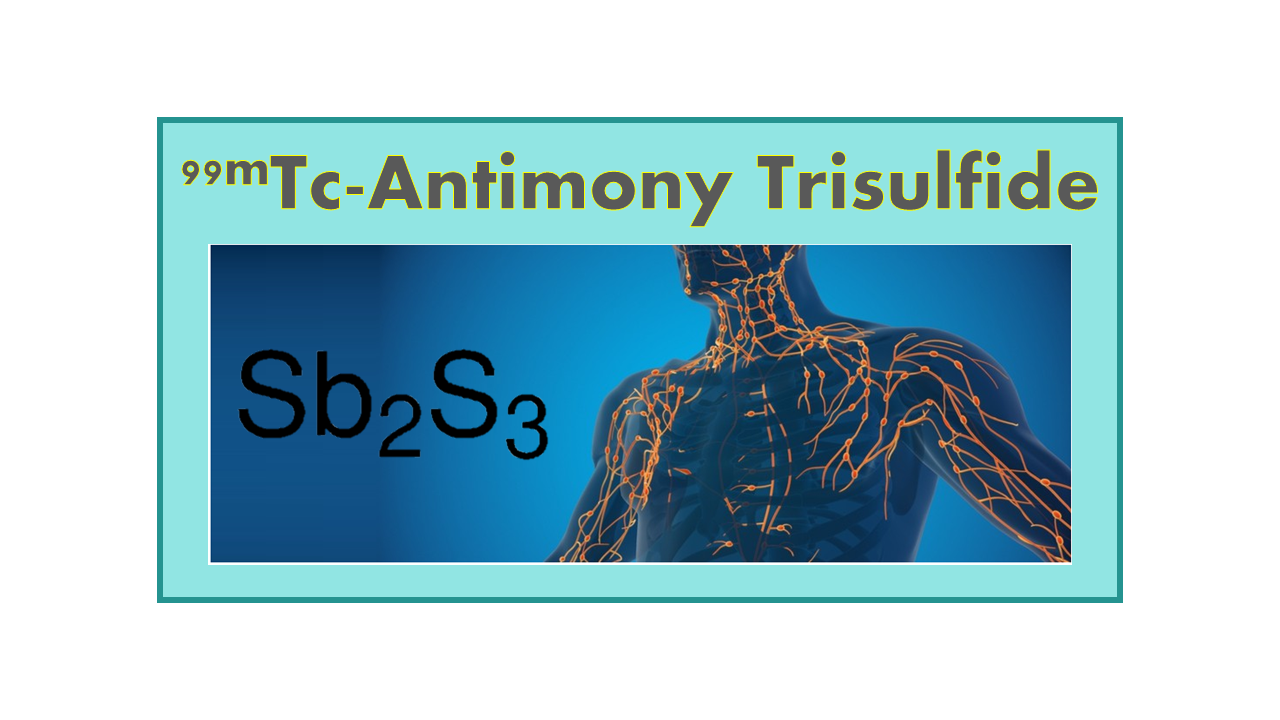
99mTc-Antimony Trisulfide (ATC)
March 28, 2024
99mTc-Antimony Trisulfide (ATC), also known as Antimony Sulfide, is a single-photon emission computed tomography (SPECT) tracer used for lymphoscintigraphy. This imaging technique involves injecting the tracer into the lymphatic system to visualize the lymphatic vessels and lymph nodes.
Lymphoscintigraphy with 99mTc-Antimony Trisulfide is commonly used in the evaluation of lymphatic disorders, such as lymphedema, lymphatic leaks, and sentinel lymph node mapping in cancer patients. By tracking the movement of the tracer through the lymphatic system, healthcare providers can identify abnormalities or blockages that may affect lymphatic drainage.
It is important to note that 99mTc-Antimony Trisulfide is available in only a limited number of countries, possibly due to regulatory approvals, availability of the tracer, or specific clinical practices in those regions. Despite its limited availability, the use of this SPECT tracer in lymphoscintigraphy has shown promising results in the diagnosis and management of lymphatic conditions.
Overall, 99mTc-Antimony Trisulfide plays a crucial role in lymphoscintigraphy, offering valuable insights into the lymphatic system and aiding in the assessment of various lymphatic disorders.
Description
99mTc-Antimony Trisulfide (ATC, Antimony Sulfide) is a SPECT tracer used for lymphoscintigraphy and is available in a very limited number of countries. Locally this product was called Lymphoscan (not to be confused with the Immunomedics product 99mTc-Bectumomab that is registered under the commercial name Lymphoscan® and that is now on hold).
Clinical applications
99mTc-Colloidal Antimony Sulfide is the optimum agent in diagnostic lymphoscintigraphy with a near ideal particle size (~10 nm) that makes it a superior product to 99mTc-Rhenium Sulfide Colloid (40–2,200 nm) and Nanocolloid (<80 nm). In Australia, this product has been commercially available since the mid-1990s and has been used in at least 20,000 patients.
99mTc-Antimony Sulfide is widely used for the visualization of lymphatic drainage in patients with Stage I/II melanomas. The dose is about 1 mCi injected intradermally over a number of sites (four to six) adjacent to the tumor.
Availability
99mTc-Antimony Trisulfide is available from Pars Isotope (Iran), and also from the Royal Adelaide Hospital (Australia) which holds a MA for this product under the name Lymph-Flo (Australia and New Zealand). This tracer is not available in Europe, nor in the US.
Competition
There are several 99mTc-labeled molecules that can be used for the same purpose and that have proven to be efficient (colloids, nanoparticles).
Comments
Despite the proven superiority of 99mTc-Antimony Sulfide over other sentinel node imaging agents, this procedure is used so routinely that physicians are not that interested to switching the agent they are used to. Also, any development costs required to obtain a MA in any other country will never be compensated by the volume of doses that can theoretically be sold. This molecule seems to be condemned to have a limited access to the original countries.